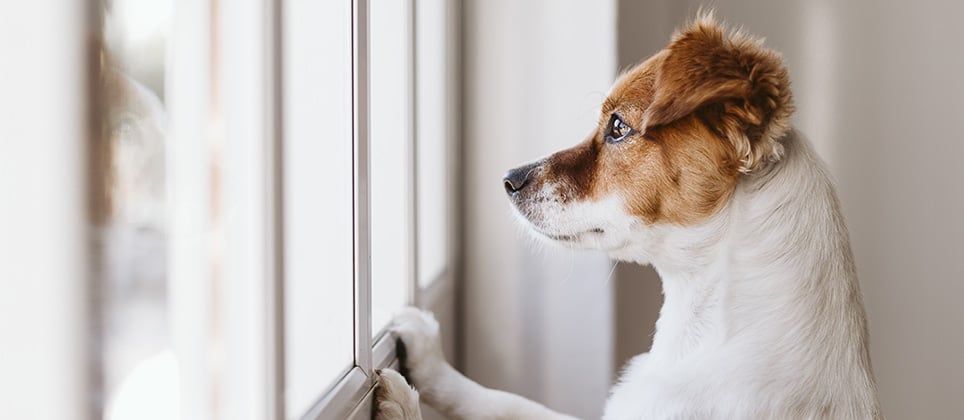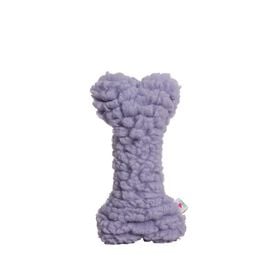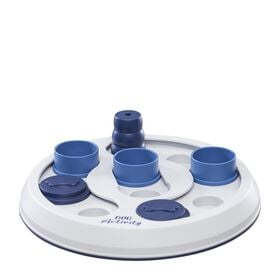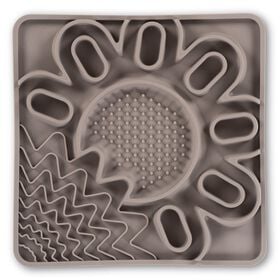‘Separation anxiety’ is a term often used to describe dogs who experience a state of panic when nobody is home to keep them company. While some dogs will present an entire of less-than-ideal symptoms, symptoms may not be so easily detectable among other dogs. Here’s what you should know in order to prevent, understand, and manage your dog’s anxiety and their fear of abandonment.

Can separation anxiety be prevented?
Unfortunately, there are few ways to prevent separation anxiety among dogs, except by trying as much you can to make your absences as painless as possible for your pet.
If you have a puppy, remember: gradually introducing him to the idea of you being absent, and creating a calm and comforting space for him without isolating him in the basement or garage can help reduce the risk of anxiety significantly.
It is estimated that between 20% and 40% of adult dogs may experience separation anxiety at some point in their lives. That percentage increases to between 30% and 50% for geriatric dogs whose brains age along with them.
Where does your dog’s anxiety come from?
If you live alone, or if your dog has lived in multiple houses in his lifetime, he will certainly be more prone to anxiety when you are gone.
However, separation anxiety, and similar conditions, are not caused by the sex of the animal or the fact that you give them too many treats, and having another dog around will rarely be enough to reduce your dog’s anxiety.
The symptoms
The following are among the symptoms most frequently seen:
- Barking (includes howling and whining)
- Destroying objects
- Excess saliva
- Tendency to dash through windows, doors or cages
- Self-mutilation
- Defecating or urinating in the house
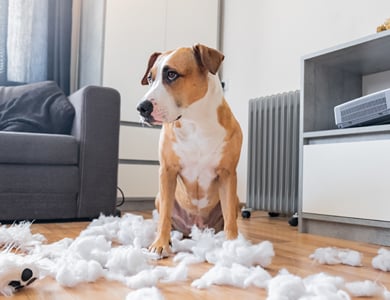
Why filming your dog can help
You’re surely aware of the damages your dog can do to your house and to himself, both before you leave and after you return home. Nonetheless, it is important that you record your pet if you do suspect any symptoms of separation anxiety: doing so will give you a glimpse at what happens when you’re not around. Show your canine expert or veterinarian your video (ideally it should be 60 minutes) so that you can get a clear diagnosis.
Getting a reliable diagnosis
The term ‘separation anxiety’ is often used because it is clear and simple. However, there are still a number of terms used to define panic, frustration, and the feeling of abandonment that your dog may experience. This is why it is essential to seek help before treating your pet: the diagnosis will have an influence on the treatment recommended.
The following can often be confused for separation anxiety:
- Panic issues related to isolation
- Excessive attachement
- Sensitivity to sounds
- Frustration
- Lack of stimulation
- Bad hygiene
Environmental changes
The fact that an anxious dog sees your absence as a negative thing is all the more reason to ensure they have space and plenty of amusements and pleasant distractions to keep them entertained.
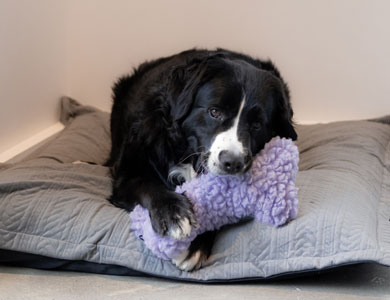
A safe space
If your dog doesn’t feel good, the cage can become a veritable prison, which is why it is not always recommended. An enclosed space, or a room or space with barriers is often less suffocating for pets. Sometimes, you’ll have to sacrifice décor in order for your pup to feel more safe!
Some dogs will feel more at peace in a restricted area, while other will enjoy the freedom to move around. If you’re afraid to let your dog go free in the house because he might pee while you’re gone, you may want to consider using a diaper that is comfortable and suited to him.
The search for comfort
Find out what is most comfortable for your dog. It might be a huge pillow, a bed, a sofa or a board of fresh ceramic! Also, be sure he has a few different places where he can relax.
A relaxing atmosphere
There are a number of natural products which can help your dog relax and promote well-being. These include everything from natural supplements to music tuned to your dog’s hearing. Some people might spray lavender on surfaces, others might turn on the TV. Studies show, however, that music and natural products designed especially for dogs are often more effective.
Stimulating activities
In order to create a rich and stimulating environment for your dog, it’s a good idea to leave around some food and chew toys to keep them entertained. These toys can help distract them or keep them relaxed while you’re gone. All you need to do is find a few food toys your dog likes and put some dry or wet food in them, as well as a few treats and favourite foods.
When does medication become necessary?
If your four-legged friend suffers in your absence, medication to regulate behaviour is strongly recommended in order to ease their suffering. Separation anxiety is a state of intense panic which can impact your dog’s heart rate as well as their breathing. It can also hinder them from behaving normally.
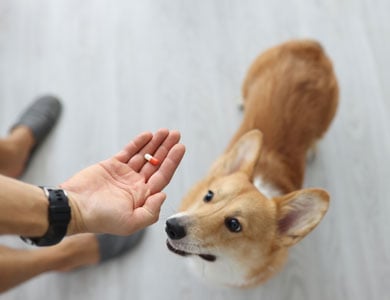
This medication may be recommended for a period of 3 to 6 months or as needed—all depending on your lifestyle. There are also a number of molecules which can be given on a one-off basis as needed. And while it is understandable that many dog owners would be reluctant when it comes to giving their pet behavioural medication, it is important to consider your pet’s well-being above all, and to weigh the risks of potential side effects against the symptoms currently being exhibited.
Medication is not a magic trick. It is, rather, a treatment designed to reduce your dog’s symptoms, and an extra tool to assist you in your appropriate behavioural therapy.
Remember that separation anxiety and similar issues that your dog may suffer from are not to be taken lightly. Hence why it is important to consult trained professionals who can accompany you and help find solutions for the sake of your pet’s happiness.
